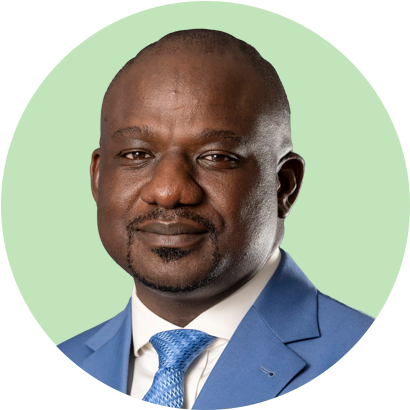Every month we have a focus on one of our Implementation Partners; this program was set up to support providers in establishing ICHOM Sets within daily clinical practice, and our network offers support in technical, change management, costing and resource planning.
This month’s partner focus is on Nordic Healthcare Group and we are excited to hear from Vesa Komssi, Executive Vice President, Nordic Healthcare Group.
Q: Can you give us a brief introduction to Nordic Healthcare Group, and what you do?
Nordic Healthcare Group is an advisory, insights and research company. We support improvement of the outcomes of health and social care, and life sciences globally to improve the lives of everyone. Rooted in our human-centric Nordic values, we deliver sustainable solutions through research, data analysis, design, digitalization, and implementation. Since 2004, our 250+ professionals have worked with public and private clients on 4000+ projects. More info can be found on NHG’s website: https://nordichealthcaregroup.com/
Q: What is Nordic Healthcare Group’s expertise in helping clients with Value-Based Care??
NHG provides full-service support for value-based healthcare implementations. To employ VBHC in practice, we support providers, payers and the life science industry in collecting and utilizing outcomes. Our offering includes, for example: VBHC strategy, outcome metrics definition, patient engagement, data collection, data visualization and BI dashboards, and agile implementation. NHG is an implementation partner for ICHOM and thus we work in close collaboration with ICHOM to support providers and payers in outcomes collection on a global scale.
Q: What do you see as the biggest challenges – and opportunities – in expanding the network of healthcare providers using VBHC models?
We at NHG see that healthcare providers face significant opportunities in both the collection and use of outcomes.
There are many challenges associated with outcomes collection. Clinical outcomes are in general easier to collect than patient-reported outcomes (PROM) but some of the clinical measures might also be scattered in the electronic medical record (EMR). PROM collection is seen as more difficult as the questionnaires are often lengthy and seldom integrated into the EMR and the results are not systematically used in patient work. Also, patients may have several parallel treatment processes ongoing which creates conflicts in answering and interpreting the PROM results. Possible solutions include the use of computer adapted testing and the use of platforms that integrate with EMR. Physicians’ and nurses’ involvement early on is also critical if you want to succeed with the collection and imbed it into the treatment process. As starting the VBHC journey can be a challenging experience, it is best to get going in simple and clearly defined procedures. In addition, one shouldn’t reinvent the wheel but learn from others that have already taken the similar journey. There ICHOM implementation partners like NHG can be of big help.
In addition to outcomes collection, we see a lot of opportunities in how to utilize the collected outcomes in patient engagement, daily clinical work, leadership and research & development. Quite often there is significant effort put into the data collection but then the use of the data is expected to happen by itself. We see that now when outcomes collection is becoming more common, the attention should be shifted to how to use the outcomes throughout the organisation as part of regular clinical practice and provider management system.
Q: What message do you have for our different audiences (e.g., providers, regulators, payers, patient organizations etc.) about how they can support the transformation to an outcomes-based healthcare system?
Implementing outcomes measurement is not easy, and it is especially difficult if you do it alone. Healthcare systems are typically organized around payers, either public or private. Payers have a critical role in enabling the implementation of outcomes measurement and, typically, have access to full care chain costs. There is no point that each healthcare provider selects their own set of outcome measures and builds infrastructure for outcomes and costs collection. Payers are best positioned to coordinate decisions on which measures to use across providers and join forces to build outcomes collection and visualization infrastructure. Payers and/or government level central coordination are especially needed for determining a) which measures to use, b) outcomes collection and visualization infrastructure, and c) funding for the implementation. Payer involvement typically leads to commitment among all stakeholders and, therefore, also chances of success are higher.
In addition to payers, patients could be an undervalued advocate of advancing value-based healthcare. Patients have the power to impact politicians who in turn can demand central coordination, secure funding, set goals and require the collection of outcomes. For this, VBHC theory needs to be translated into real life patient stories and combined with design thinking. We at NHG have for example engaged with patient advocacy groups to promote the advancement of an outcomes-based healthcare system in Finland.
Q: Can you share any examples where you’ve helped clients successfully adopt VBHC models?
One great example of a NHG’s VBHC implementation comes from Estonia where we supported Estonian Health Insurance Fund (EHIF) to implement stroke outcomes set in four hospitals. NHG’s role was to support the overall management of the project and visualization of the outcomes and costs. NHG linked PROM data with clinical outcomes and full care chain costs to create a visual BI dashboard which allowed analysis of outcomes and costs and identify areas of improvement. This dashboard has enabled hospital management and clinicians to detect and learn from the best practices and benchmark outcomes and costs between hospitals, patient groups, and care pathways. The dashboard also supports evaluating impact of patient pathway improvement initiatives on outcomes and costs, and therefore enables scaling of highest value initiatives to all hospitals.
More information about the Estonian stroke implementation can be found on NHG blog on ICHOM website: https://www.ichom.org/nordic-healthcare-group-blog/
Q: Now, crystal ball time: how do you think the healthcare part of your business will look ten years from now – and what role will VBHC models play within it?
In ten years time NHG will be locally present on all continents and we will support healthcare transformations based on VBHC principles.




















